April 24-26, Great Inagua Island, The Bahamas
“There are three sorts of people; those who are alive, those who are dead, and those who are at sea.” – Old Capstan Chantey, attributed to Anacharsis, 6th Century BC
We arrived after our 3 ½ day passage from the BVIs at 1700 on April 24th. We had calm seas on the way in, so we cleaned the boat, took showers, and we were pretty well put together by the time we dropped the anchor off of Matthewtown on Great Inagua Island in the southern Bahamas. I thought about the fact that just 8 months before, we had taken our first overnight passage, from Maine to Boston. I remember feeling nervous. I remember spending days getting ready to leave and spending days recouperating and cleaning up. We had literally come a long way. We had been blessed by Neptune on this trip and made good time with little in the way of difficult weather or seas. That said, we know that no sailor, no matter how salty, can ever rest on his or her laurels when it comes to ocean passages. Each one will forever be a new adventure with its own unique set of challenges.
We paused for a moment to look around and settle into what would be our home country for the next 6 weeks. The island was low and flat with white beaches in some places and rocky shores in others. We saw a handful of buildings and a lighthouse on the point. The water all around us was the brightest turquoise blue you could imagine. It went on and on and on as far as the eye could see. We could not see any other land besides Great Inagua.
I dinghied around to say hello to the other two boats in the harbor and asked about clearing customs. It was after 5pm, so it would have to wait until the next day for sure. Back at the boat, Chris and Reese swam to check on the anchor and we had an early night to catch up on sleep. We hoped that Anything Goes would arrive the next morning! Looking around at the clear blue water and the inspirational beauty of this part of the world, I made a resolution to both swim and meditate every day we were in the Bahamas.
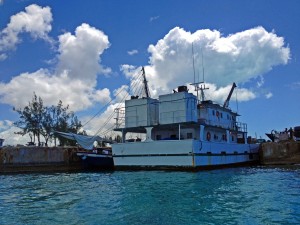
A Haitian boat and the Mail Boat block the entrance for hours so they can unload their goods. Everything needed by the people here has to be brought in from Nassau or Florida. Well, except for salt…
Bryson woke up at the crack of dawn to see Anything Goes enter the harbor and drop anchor. We did schoolwork early and then went over to say hello. We hadn’t seen them since St. Maarten and it was too long! Wendy and I attempted to take the dinghy to town to check into customs, but the mail boat had arrived to unload groceries and it was blocking the entrance to the inner harbor. Well indoctrinated to living on “island time”, we turned back and figured we would just come back later…
Craig and I returned after lunch and were lucky to get a ride to Customs and Immigration by the gentleman in charge of Customs, who happened to be leaving the docks. He was very welcoming and helpful in answering our questions. The customs agent was also very friendly, but we learned very quickly that things don’t move at a very fast clip here. “Island Time” seems to have been taken to a whole new level here.
Craig and I filled out a lot of forms. We listened with interest to the banter going on between the customs agents but were bothered and distracted by the television, which was droning in the corner. We hadn’t seen TV in months and experienced culture shock at the coverage of the weeks following the Boston Marathon bombing. I was so sad and angry and frustrated. We had only been away from the states for 6 months, but all the news that reached us was just awful: Hurricane Sandy and the nor’easter, the school in Connecticut, and now this. We looked at each other and worked hard to formulate a plan that would allow us to stay out sailing forever. But five minutes later, we gave up, yet again, and decided to just enjoy the CNN/Fox/MSNBC-free world while we had the chance.
Most of the countries we have visited have fees for clearing customs. We had paid as little as $20 and as much as $100. We were in for a shock. $340 later, we were given the okay to cruise the 700 islands and 2400 cays of the Bahamas for up to a year (I don’t think we are going to see it all…). We also had a fishing license, which would save us much more than the $340 in free* fish.
*not including the mega bucks spent in fishing stores for lures, lines, hooks, and other paraphernalia. Just kidding. Kind of.
On the way back to the dinghies, we got the low down on the broken down sailboats littering the harbor. These boats defied seaworthiness. The masts and booms were made of rough hewn tree trunks. Like, practically with the branches still attached. Seriously. They hadn’t seen paint in years and looked like they couldn’t move an inch without sinking to the bottom. Imagine our surprise when we learned that these boats were here from Haiti to purchase supplies and groceries! The Haitians sail 60 miles without lifejackets, running lights, safety equipment, or an engine. I was impressed, sad, afraid, and shocked. Some Haitian boats arrive under the auspices of getting supplies, but they are actually smuggling refugees and/or drugs. Two of the boats in the harbor had been impounded by the Bahamian government when they arrived carrying thousands of pounds of cocaine. Um. I think we’ll lock our boat up tonight. We learned the next day that the Bahamian government has to spend millions of dollars a year to deal with the Haitian refugees and drug smugglers. I understood why the Bahamians allowed these facts to give them a very negative opinion of them, and I recognize that the government has to do something, but when I think of the Haitians, I see desperation, fear, and sadness. I remembered the 7 Haitians who drowned trying to leave Dominica when we were there. As a fellow sailor, I have to feel concern for them as they take to the open sea in such boats.
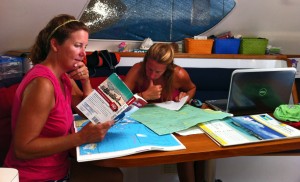
Wendy and I pore over charts and guidebooks to plan our voyage through the Bahamas. How do you cut 700 islands down to 23?
That night, we enjoyed a quick reunion drink with Craig and Wendy, but we all needed to continue to catch up on sleep after our passage. As always, our conversations centered around the question, “Where should we go tomorrow?” We only had until July 1st before we had to be back in the states for hurricane season. We needed to make the most of our time in the Bahamas by devising a good plan.
Great Inagua isn’t known for its tourism, but it did have a few points of interest, so we decided to check it out since we were already there. We hired a friend of the customs agent to take us on a tour of the national park in his pickup. We wanted to see the famous flamingoes and visit the salt flats, where they make sea salt for Morton’s.
The kids got to ride in the back of the pickup truck while we bumped all over Great Inagua. Here are some interesting facts we learned:
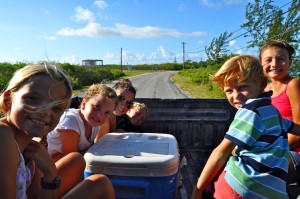
- No seat belts, no car seats, no problem. There are also no traffic lights and only about 10 other cars…
- *Great Inagua makes 1.3 million tons of salt a year.
- *When the islanders need salt, they just go out to the flats and scoop some up.
*Salt is made in marshes in 3 stages.
*Flamingoes lay only 1 egg a year and live to age 45.
*Flamingoes are gray in color when they are young and turn pink from the plankton and algae they eat.
After our tour, we climbed the lighthouse in Matthewtown and walked back to the docks. As is customary, we stopped in the superette to check out the food scene. We snagged some produce and were pleased that the prices of most items were good.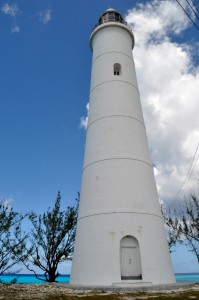
We were leaving that evening for a 163 mile passage to Long Island, Bahamas, so Chris grabbed some roadside barbecue to go. We love roadside barbecue! In many communities, a local will set up a tent and a giant barbecue and cook up fresh, awesome, authentic island foods. You can eat it there or take it to go. We filled up on bbq chicken, rice-n-beans, corn on the cob, Bahamian macaroni and cheese, and mashed potatoes and then prepared to sail.
We weighed anchor for our overnight passage just as the Haitians pulled out of the harbor. They sailed off in their crazy boats for Haiti. My heart was heavy as I watched those men enter the sea without any of the safety measures that the rest of us take for granted. I kept saying over and over, “They don’t even have running lights…”
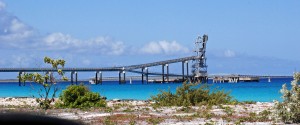
salt is moved out on belts and poured directly onto ships. hmmm. that sounds dirty to me. can you “wash” salt??? do they?
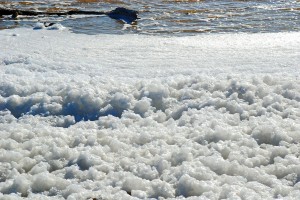
the beaches along the salt ponds are crusted in salt. We’re pretty much set for salt for the next ten years!

The flamingoes didn’t like the rumbling of the pick up truck, so it was hard to get good pictures of them.

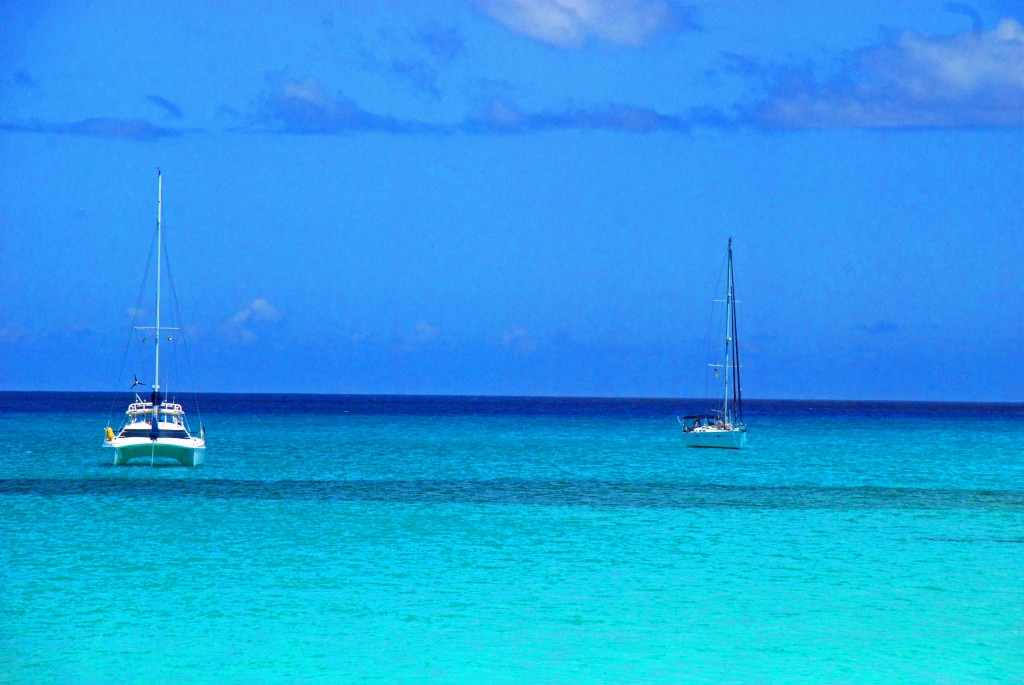
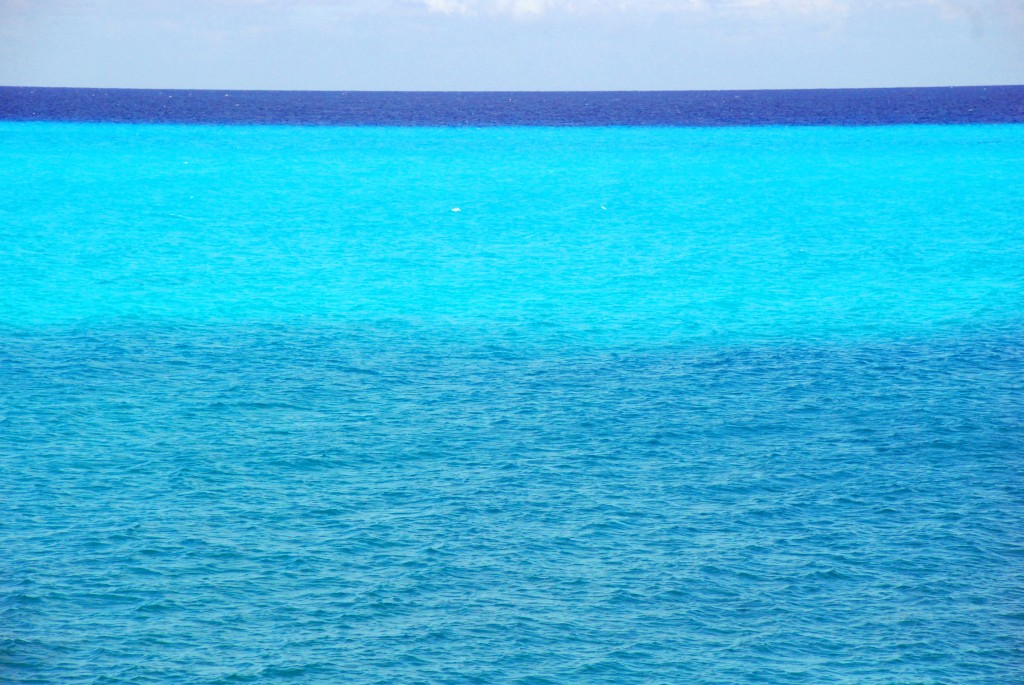
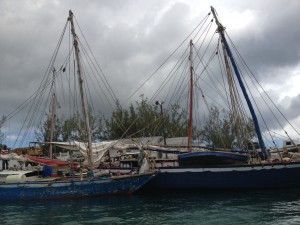
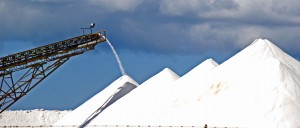
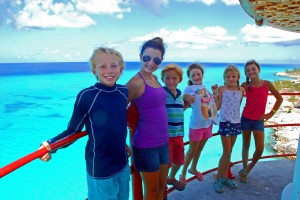
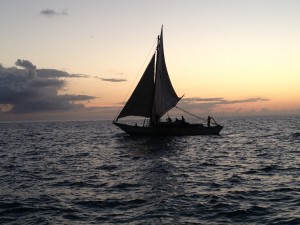
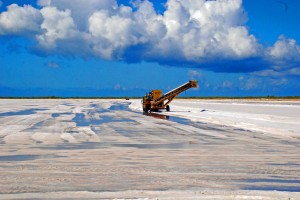
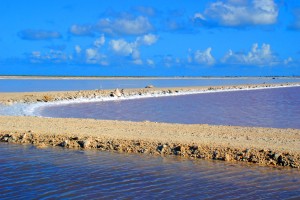

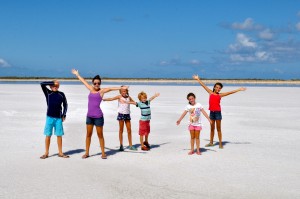
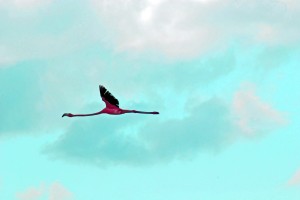
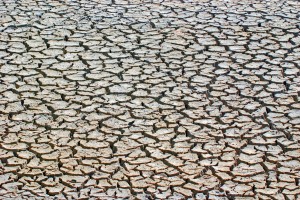
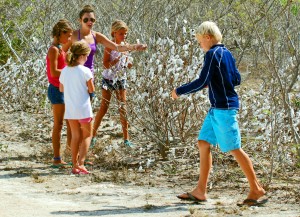
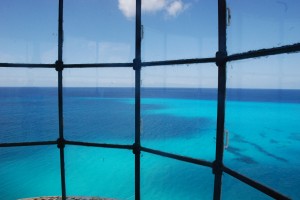
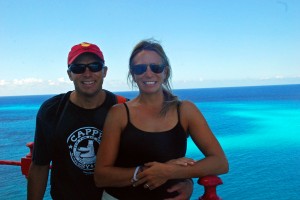
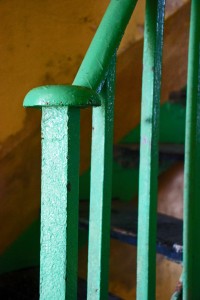
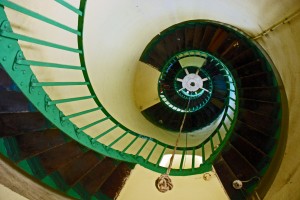
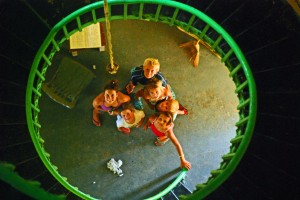
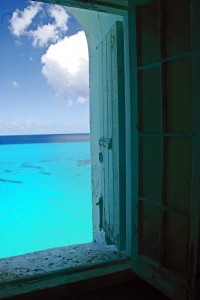
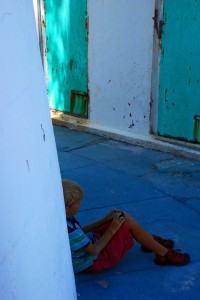
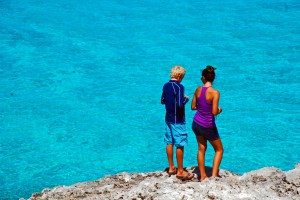
All the photos look great! I loved the salt flats :) the water its amazing.
I save your “Be Safe, Sailors.” I think it is one of your best (among many)!